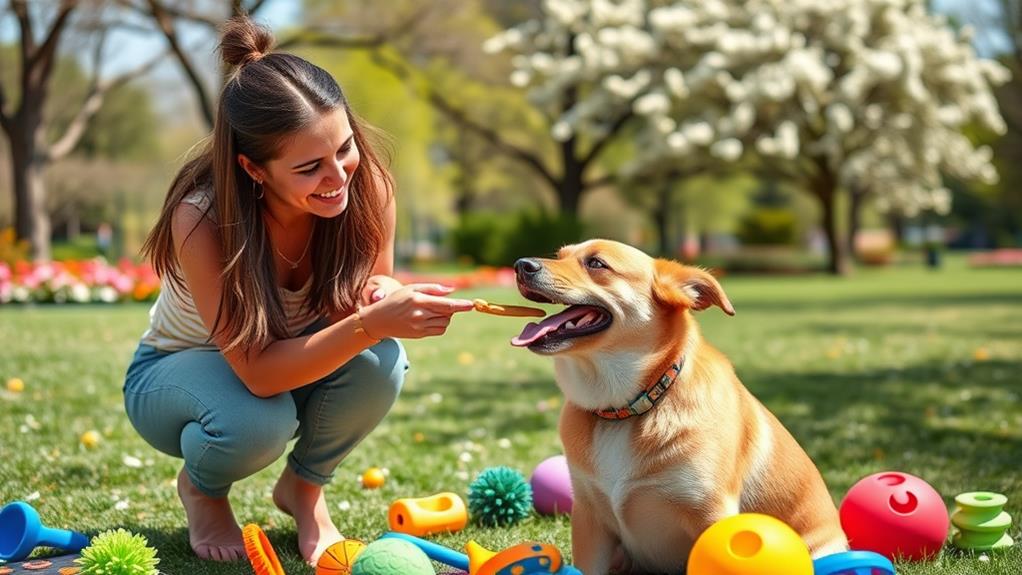Positive reinforcement techniques are key to effective dog training. You should reward your dog immediately after they display the desired behavior, creating a strong connection in their mind. Use treats, praise, or playtime as rewards, ensuring they match what motivates your dog. Consistency is essential—stick to clear commands and reward types to avoid confusion. Clicker training can also be a great tool, marking behaviors with a distinct sound before offering a reward. Remember to keep training sessions short and fun. You'll discover even more strategies to help your dog learn effectively and happily.
Understanding Positive Reinforcement
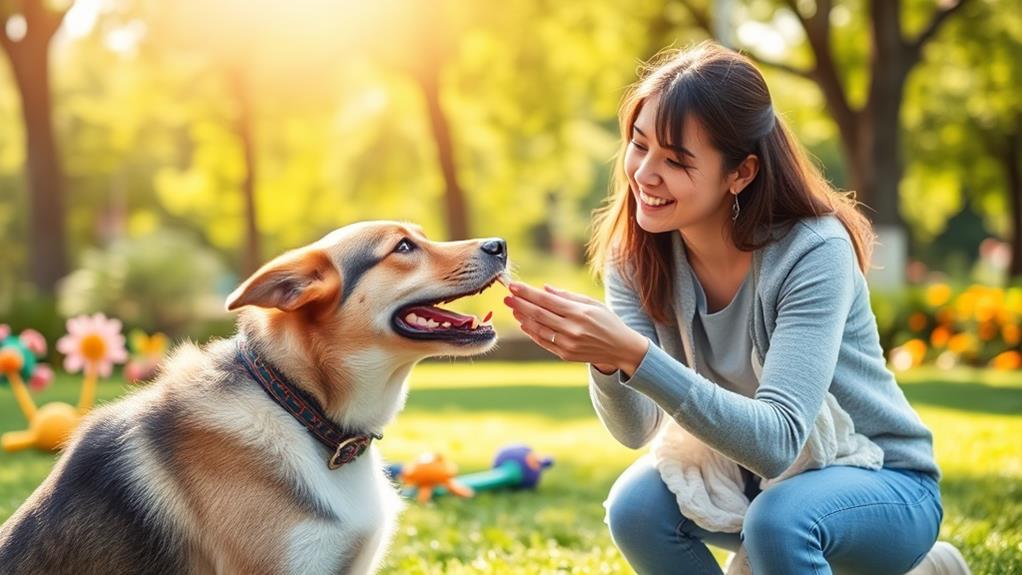
Positive reinforcement is one of the most effective methods for dog training, and it focuses on rewarding desired behaviors to encourage their repetition. When you use this technique, you create a positive association in your dog's mind, making them more likely to repeat the behavior you want. For instance, when your dog sits on command and you reward them, they learn that sitting leads to a pleasing outcome.
Understanding how positive reinforcement works helps you communicate better with your dog. It's vital to reward them immediately after they perform the desired behavior. This timing helps them connect the action with the reward, reinforcing their learning. You'll want to be consistent, too; using the same cues and rewards helps your dog grasp what's expected.
Another key aspect is ensuring that the rewards you choose are meaningful to your dog. Pay attention to what excites them, whether it's treats, toys, or praise. Remember, the goal is to build trust and strengthen your bond, so always keep the training sessions fun and engaging. By understanding and applying positive reinforcement effectively, you set the stage for a well-behaved, happy dog.
Types of Rewards
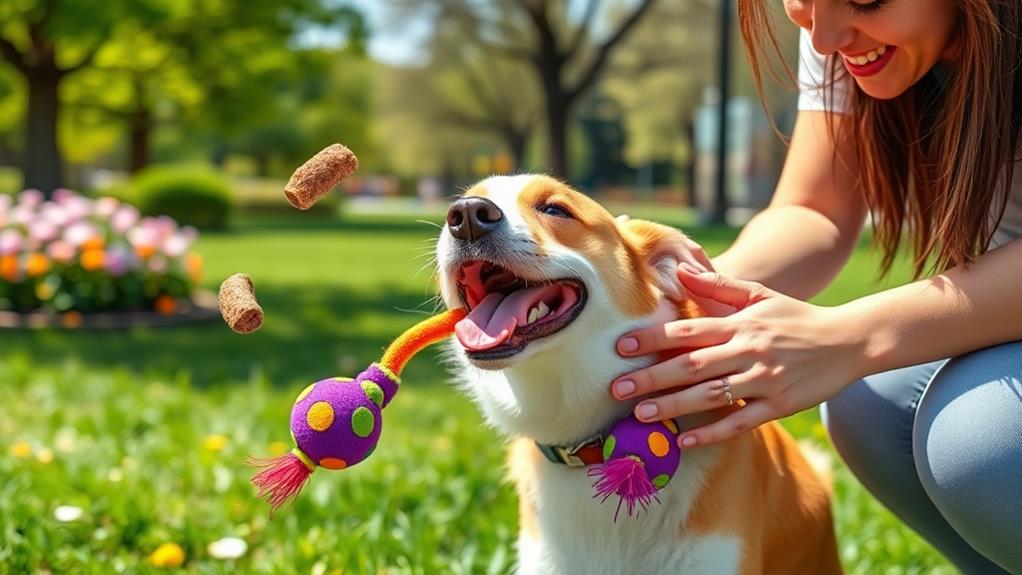
Choosing the right rewards is indispensable for effective positive reinforcement in dog training. Rewards can be divided into three main types: treats, praise, and play. Each type serves a unique purpose and can motivate your dog in different ways.
Treats are often the most effective rewards, as they provide immediate gratification. Use small, tasty treats that your dog loves, ensuring they're easy to chew quickly. Make sure to vary the treats to keep your dog engaged and excited.
Praise is another powerful reward. Dogs are social animals, and your approval means a lot to them. Use enthusiastic verbal cues and physical affection, like petting or belly rubs, to reinforce good behavior. Your tone of voice can convey excitement, which helps your dog associate the behavior with a positive outcome.
Finally, play can be a fantastic reward, especially for energetic dogs. Incorporate a quick game of fetch or tug after your dog performs a desired behavior. This not only rewards them but also strengthens your bond.
Experiment with these reward types to find what motivates your dog best. Remember, the key is to make the rewards enjoyable and consistent for effective training.
Timing and Consistency

Getting the timing right in dog training can make all the difference in how effectively your dog learns. When you reward your dog immediately after they perform the desired behavior, you create a clear connection between the action and the reward. This helps your dog understand what they did right and reinforces that behavior. If you wait too long, your dog might get confused and associate the reward with something else entirely.
Consistency is equally important. You need to guarantee that you're rewarding the same behaviors every time. If you reward a behavior one day but ignore it the next, your dog won't know what's expected of them. Establish a clear set of commands and stick to them. Use the same words and gestures, so your dog learns to associate them with specific actions.
Also, remember to keep your rewards consistent in type and value. If you sometimes offer treats and other times give praise, your dog may not understand the level of effort required for each reward. By focusing on timing and consistency, you'll set your dog up for success, making training a more enjoyable experience for both of you.
Clicker Training Basics
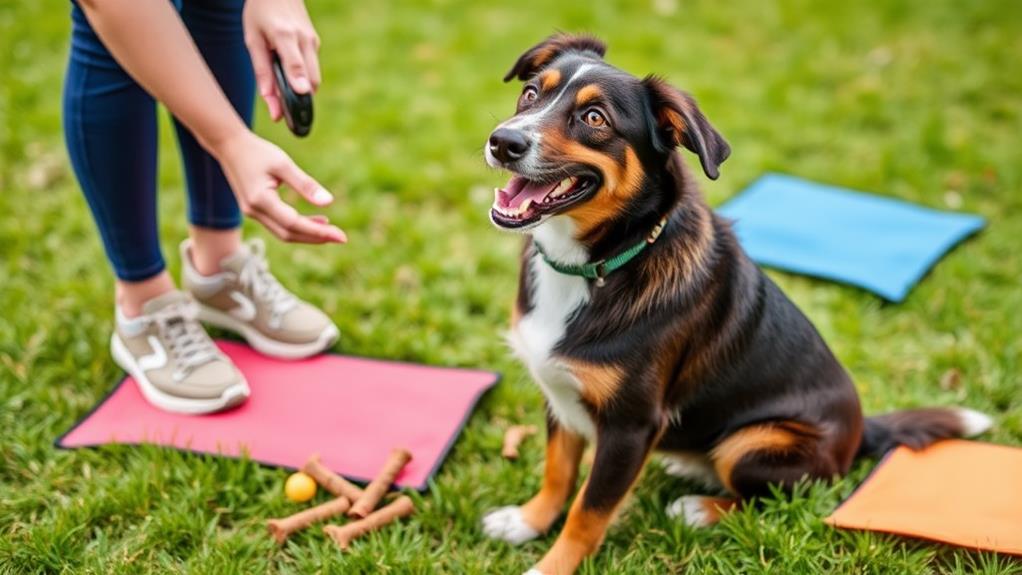
Clicker training is a popular and effective method for teaching dogs new behaviors. It uses a small handheld device that makes a distinct sound—this is your clicker. The key is to associate the sound of the clicker with a positive outcome, like a treat or praise.
To start, get your dog's attention and wait for them to perform a desired behavior, such as sitting or lying down. When they do, immediately click the clicker and follow it up with a reward. This helps your dog understand that the click means they did something right.
Consistency is pivotal; make sure to click and reward every time they exhibit the desired behavior at first. Over time, you can start to fade out the treats, clicking only when they perform the behavior correctly. Remember to keep training sessions short and fun, ideally around 5 to 10 minutes, to maintain your dog's focus and enthusiasm.
You can use the clicker for various commands, making it a versatile tool in your training arsenal. With practice, your dog will learn to associate the click with positive reinforcement, enhancing their learning experience.
Shaping Behavior Gradually
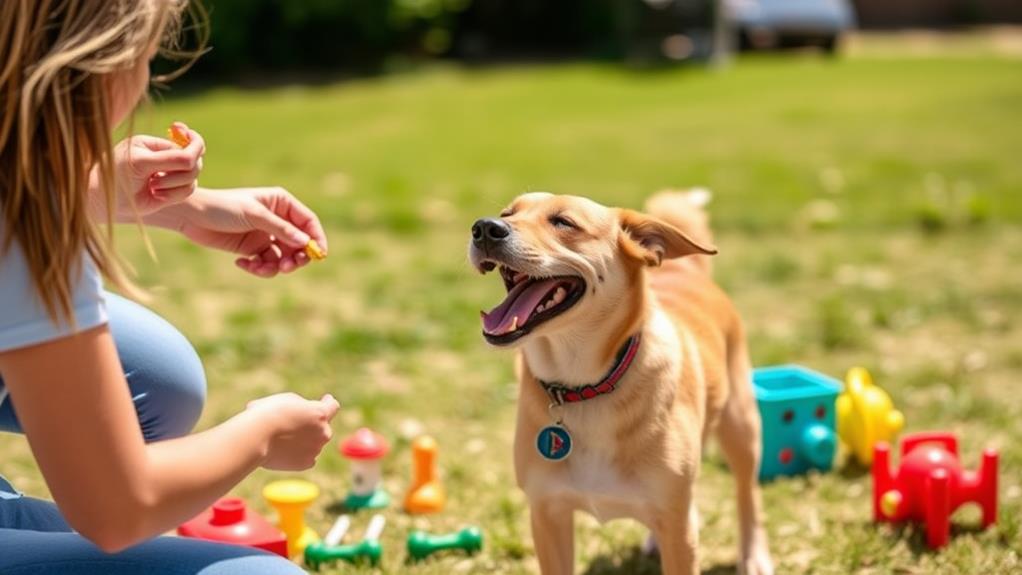
Over time, shaping behavior gradually can lead to impressive training results. This method involves breaking down complex behaviors into smaller, manageable steps.
Start by identifying the final behavior you want your dog to learn. For example, if you want your dog to perform a reliable sit, begin with any movement toward a sitting position.
Using positive reinforcement, reward your dog for each small success. If your dog stands, mark that behavior with a click or a verbal cue and give a treat. Gradually increase your expectations; only reward when your dog lowers its body closer to the ground. This process encourages your dog to understand what you want without overwhelming it.
Remember to be patient. Some dogs might take longer to grasp certain concepts, so celebrate every step along the way. Keep your training sessions short and engaging, allowing your dog to enjoy the process.
Incorporating Play as Reward
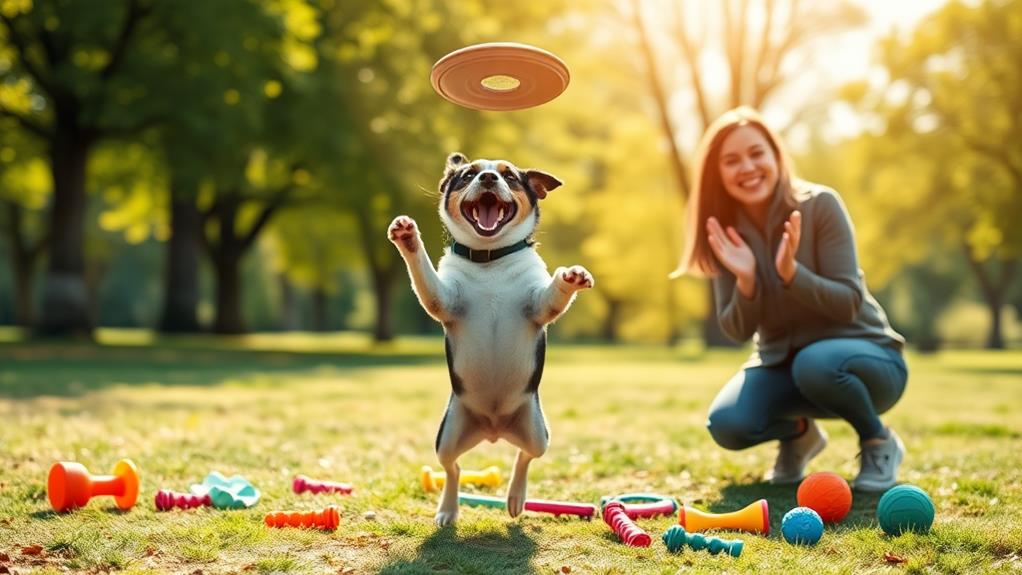
As your dog begins to grasp the commands through shaping, incorporating play as a reward can enhance their motivation and engagement. Playtime isn't just fun; it's a powerful tool that encourages your dog to respond positively. Use their favorite toy or a game of fetch as a way to celebrate their successes.
When you notice your dog following a command correctly, immediately follow it up with a short play session. This creates a strong association between the behavior and the reward. Your dog will start to look forward to training sessions, knowing that playtime is just around the corner.
Make sure to keep the play sessions short and lively to maintain your dog's interest. If they seem distracted, switch to a different toy or game to recapture their attention. It's important to match the intensity of the play with your dog's energy levels.
Also, remember to vary the types of play you incorporate, as this keeps things fresh and exciting. By consistently using play as a reward, you'll not only reinforce good behavior but also strengthen the bond between you and your furry friend.
Common Mistakes to Avoid
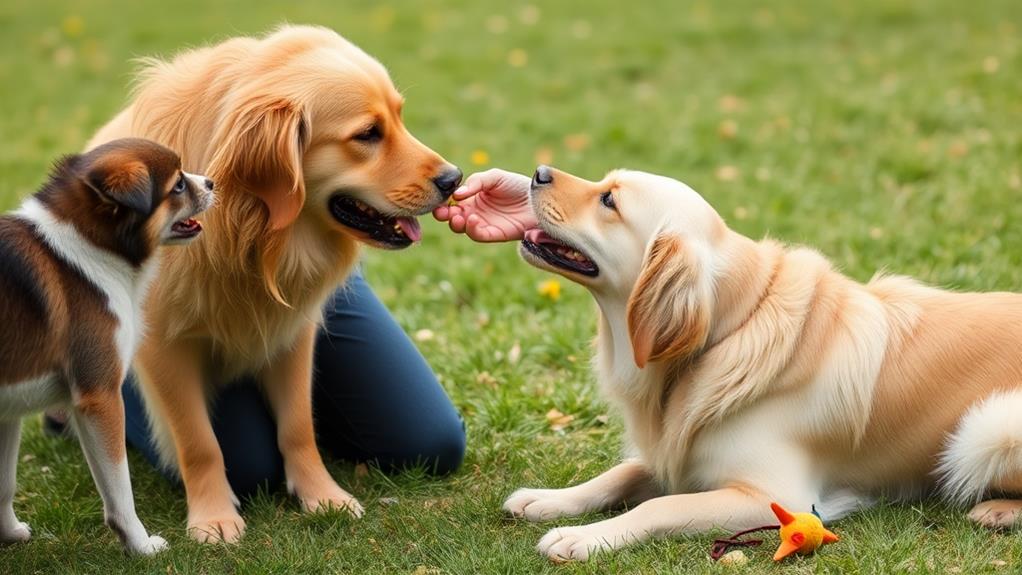
While training your dog, it's easy to slip into common pitfalls that can hinder progress. One major mistake is being inconsistent with your commands and rewards. If you're not clear and consistent, your dog can become confused about what behaviors are expected. Make sure you use the same cues every time.
Another mistake is using negative reinforcement. While it can be tempting to scold your dog for unwanted behavior, this approach often leads to fear and anxiety. Instead, focus on redirecting your dog to a positive behavior and rewarding that.
You might also overlook timing. Delivering rewards too late can disconnect the behavior from the reward, making it less effective. Always provide reinforcement immediately after the desired action.
Lastly, don't forget to take breaks. Overtraining can lead to frustration for both you and your dog. Keep sessions short and engaging, allowing your dog to rest and absorb what they've learned.
Frequently Asked Questions
Can Positive Reinforcement Be Used for All Dog Breeds?
Yes, positive reinforcement can be used for all dog breeds. You'll find it effective in teaching behaviors, regardless of size or temperament. Every dog responds uniquely, so adapt your approach to fit their individual needs.
How Long Should Training Sessions Last for Best Results?
For a puppy like Max, short sessions of 5-10 minutes work best. You'll keep his attention and energy high. Overall, aim for multiple brief sessions throughout the day to reinforce learning effectively and maintain engagement.
Is Positive Reinforcement Effective for Older Dogs?
Yes, positive reinforcement's effective for older dogs! They respond well to rewards and encouragement, just like younger ones. You'll notice improvements in behavior when you consistently use treats or praise during training sessions.
What Should I Do if My Dog Ignores Rewards?
If your dog ignores rewards, try different treats or toys to see what excites them. Also, practice in a distraction-free environment, and guarantee you're consistent with your cues to reinforce desired behaviors effectively.
Can I Combine Positive Reinforcement With Other Training Methods?
Yes, you can combine positive reinforcement with other training methods. Just guarantee that the techniques complement each other. Mixing methods can enhance your dog's learning experience and strengthen your bond, making training more effective and enjoyable.
Conclusion
In the vibrant tapestry of dog training, positive reinforcement weaves the brightest threads. By understanding rewards and timing, you paint a picture of trust and joy with your furry friend. Picture each successful command as a colorful brushstroke, gradually crafting a masterpiece of behavior. Remember, avoid the pitfalls that can dull your creation. With patience and love, your bond will bloom, transforming every training session into a delightful dance of companionship and shared victories.

